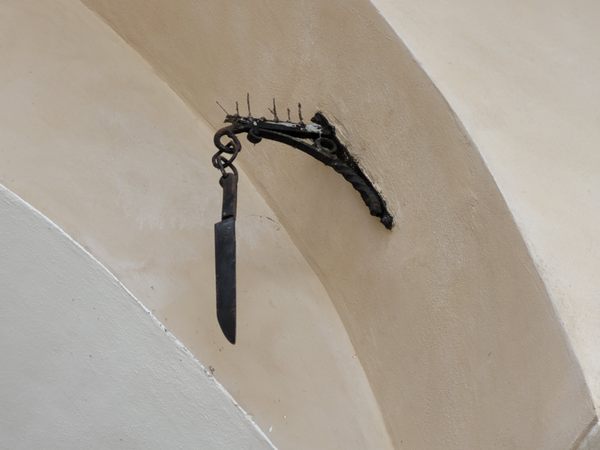Hidden in plain sight above the main entrance of Krakow Old Town’s UNESCO-listed Cloth Hall hangs a relic steeped in 14th-century intrigue and legend. This knife, prominently displayed for all who gaze upward, is more than just an ornament; it symbolizes a gruesome and fatal tale of sibling rivalry, tied to the asymmetrical twin towers of the renowned church across the square.
Lore has it that two local builder brothers were hired to construct the towers of St. Mary’s Basilica. When the younger brother saw that the elder’s tower was taller, jealousy drove him to murder his sibling with a knife. He then hastily finished his own north tower, making it the tallest, and completed his brother’s south tower with a cupola. Overcome with guilt on the day of the towers’ consecration, he climbed to the top, confessed his crime to the crowd, and, in despair, drove the very knife into his heart before falling to the ground below.
While the legend portrays it as a murder weapon, another theory suggests that the knife hanging in the Cloth Hall was instead used as a deterrent against thieves tempted by the merchants’ goods during the Middle Ages. At that time, theft was harshly punished; a thief risked losing an ear or, for more serious offenses, an arm. Ironically, the original knife is believed to have been stolen during World War II, with the one displayed today being a replica.

